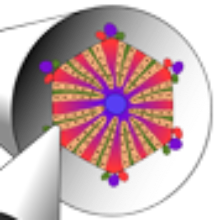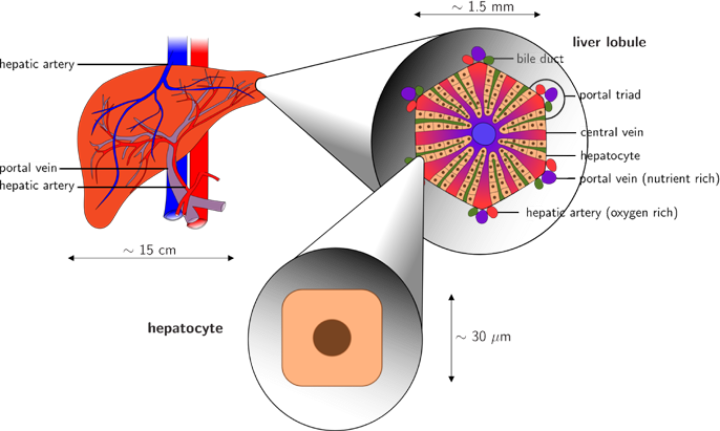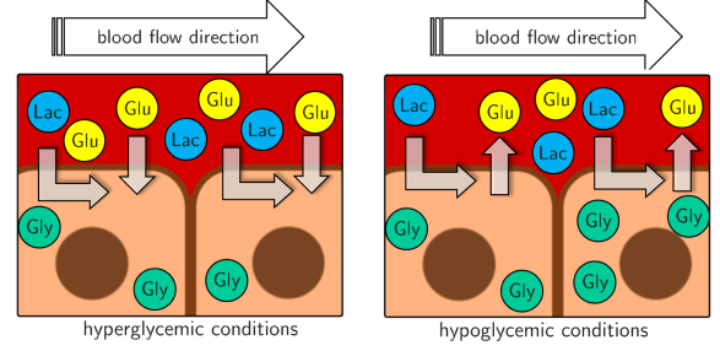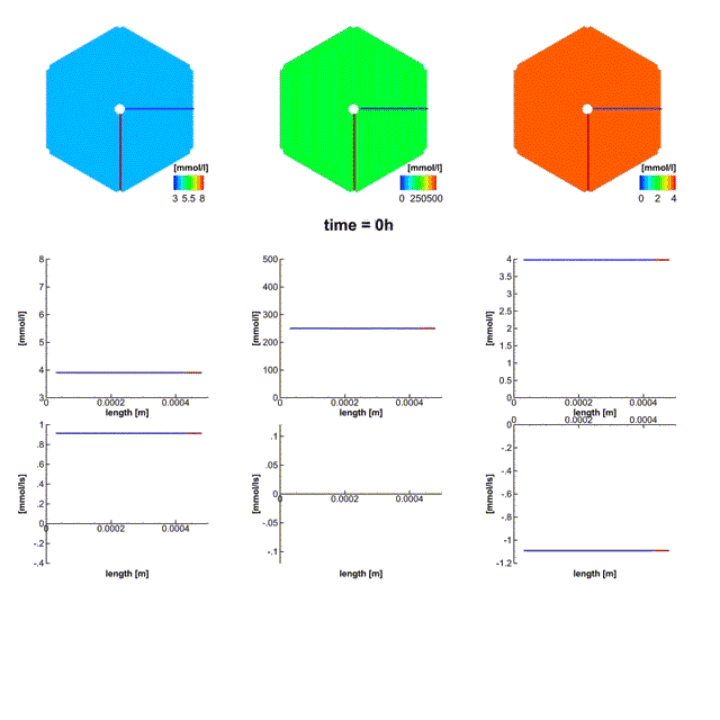The liver is the central metabolic organ in the human body. The main tasks of the liver are production of proteins, secretion of hormones, removal of waste products and storage as well as depletion of high energy substances. The functionality of the liver is mainly influenced by the perfusion of the smallest repetitive sub elements, the so called lobules. A dysfunctional micro perfusion is mainly caused by diseases of the liver, such as steatosis, cirrhosis or tumor growth.
For the simulation of the functionality and perfusion of the liver we are aiming for a multiphasic, continuum mechanical formulation of the liver, taking the macro scale (organ level), meso scale (liver lobule) and micro scale (metabolism in the hepatocytes) into account. Since the structure of the liver can be described as a porous, fluid saturated solid, use of the Theory of Porous Media (TPM) for modelling the micro perfusion is made. The origin of the TPM lays in the mechanical description of fluid filled soils, formulated in the early 19th century by Terzaghi.
The underlying micro scale is described by a set of ordinary differential equations. The set of differential equations is already capable to describe one of the most important aspects of the hepatic metabolism, the storage and depletion of glycogen. The movie at the bottom of the page shows the spatially and temporarily resolved production of glucose in a single liver lobule.
Publications
Daniel Werner, Tim Ricken, Hermann-Georg Holzhütter, Matthias König, Uta Dahmen, and Olaf Dirsch
On growth effects in the human liver
PAMM, Volume 14, Issue 1, pages 105–106, December 2014 [DOI: 10.1002/pamm.201410040]
Tim Ricken, Daniel Werner, Hermann-Georg Holzhütter, Matthias König, Uta Dahmen, and Olaf Dirsch
Modeling function-perfusion behavior in liver lobules including tissue, blood, glucose, lactate and glycogen by use of a coupled two-scale PDE-ODE approach.
Biomechanics and Modeling in Mechanobiology, 09/2014;
DOI: 10.1007/s10237-014-0619-z
Tim Ricken, Uta Dahmen, Olaf Dirsch, Daniel Werner
A Biphasic 3D-FEM Model for the Remodeling of Microcirculation in Liver Lobes.
Computer Models in Biomechanics, 2013, pp 277-292
ISBN: 978-94-007-5463-8 (Print) 978-94-007-5464-5 (Online)
Daniel Werner, Tim Ricken, Anne Ferreira Pfeiffer
On a FEM model for isotropic and transversely isotropic growth in biphasic materials.
PAMM 12/2013; 13(1). [DOI:10.1002/pamm.201310027]
Thomas Schmidt, Daniel Balzani, Tim Ricken, Daniel Werner
A Biphasic Approach for the Simulation of Growth Processes in Soft Biological Tissues Incorporating Damage-Induced Stress Softening.
PAMM 12/2012; [DOI:10.1002/pamm.201210037]

Tim Ricken
Univ.-Prof. Dr.-Ing.Head of Department





